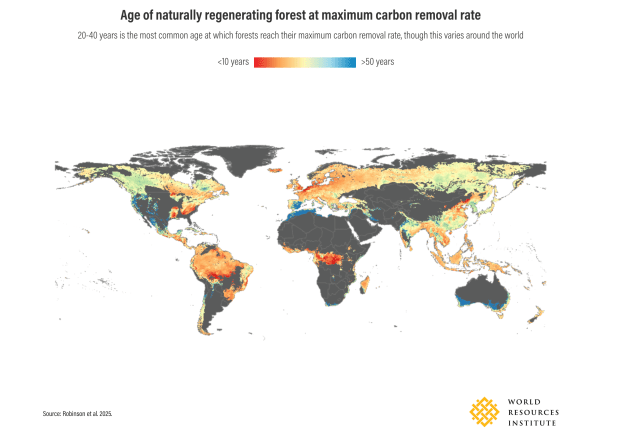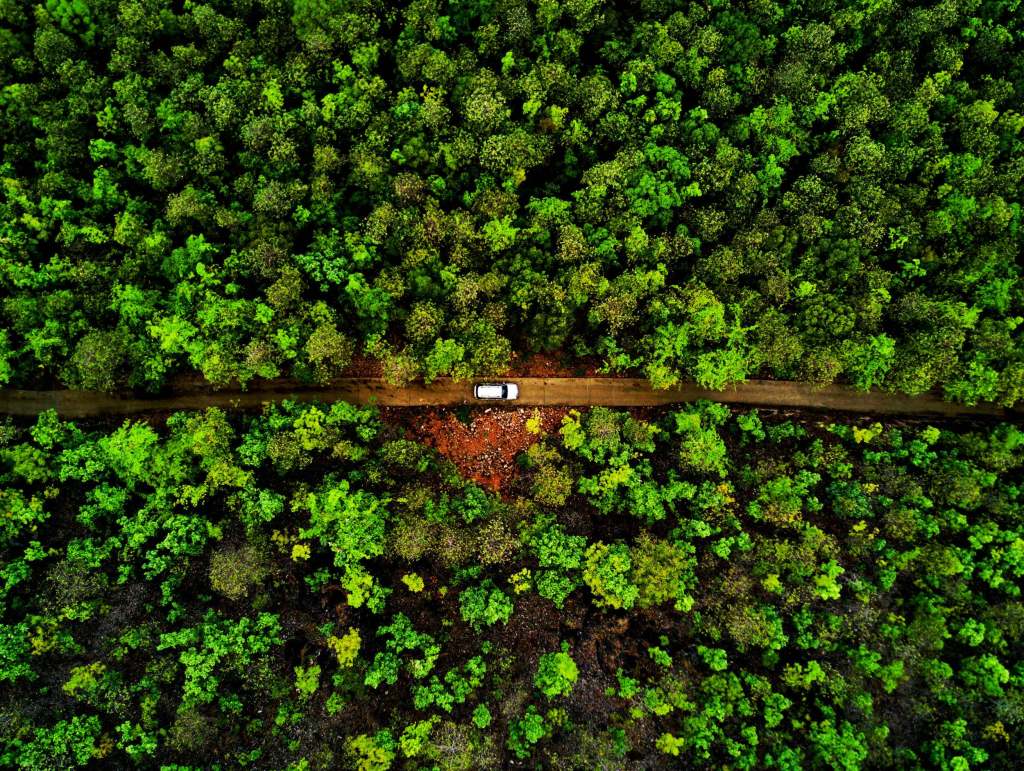Forests are an essential solution for tackling climate change, and yet most climate policy focuses on the protection of mature trees. New research by The Nature Conservancy scientists provides the first detailed picture of the carbon removal value of naturally regrowing forests
The Gist
Researchers from The Nature Conservancy (TNC) and 12 other institutions across the globe developed a global machine learning model that maps how carbon removal changes as forests naturally regenerate. Published in Nature Climate Change, these new maps show that carbon removal rates can vary 200-fold through space and time.
They also make it possible to precisely pinpoint how much carbon forests less than a century old can remove from the atmosphere anywhere across the globe. The results demonstrate that young secondary forests are the best at removing carbon from the atmosphere — up to 8 times faster per hectare than newly planted forests. But there’s a catch: those carbon storage benefits only kick in if we allow regenerating forests to reach approximately 20 to 40 years of age.

The Big Picture
It’s long been recognized that forests are both a critical carbon sink and a vital tool for combating climate change. But the rate at which trees remove carbon from the atmosphere varies by both forest age and forest type.
Previous research highlighted the carbon storage potential of naturally regenerating forests. “Forests are disturbed all the time, either through natural processes, like fire and storms, or through human activities like timber harvesting, agricultural land abandonment, or shifting cultivation,” says senior author Susan Cook-Patton, a reforestation scientist at TNC.
Now, lead author Nathaniel Robinson, alongside Cook-Patton and other collaborators, provide the first detailed map of the carbon removal value of naturally regrowing forests varied across space and time. Their results show the locations and ages where these forests could be especially powerful for fighting climate change.
The Takeaway
Despite their carbon storage potential, naturally regenerating forests are largely ignored by current climate policies. “People are either focused on those mature forests, that are so iconic and important for carbon and biodiversity, or reforestation of cleared lands,” Cook-Patton explains. “But you can get more timely carbon removal from these young secondary forests, which are often considered lower value or degraded.”
The problem is that most regenerating forests never make it to their peak carbon removal age. Cook-Patton notes that half of secondary forests in the Brazilian Amazon are cleared within eight years. In Costa Rica, the average estimated forest age at clearance is 20 years, just as their carbon storage potential accelerates. But these naturally regenerating forests are the best of both worlds — they have vast carbon removal potential and only require letting nature continue on its course.
These results highlight the need for additional protections for these underappreciated, existing secondary forests, as well as the mobilization of additional resources for forest restoration globally. With a shrinking window to act, Cook-Patton says it is critical to find the places that provide the greatest climate returns per hectare of investment – in the time we need it.



